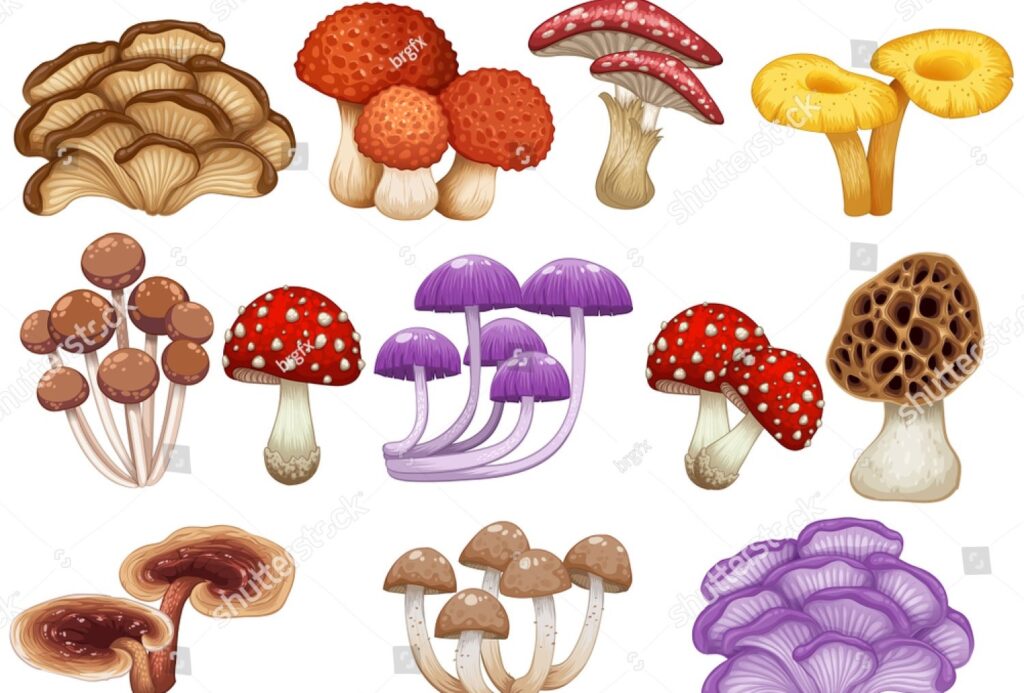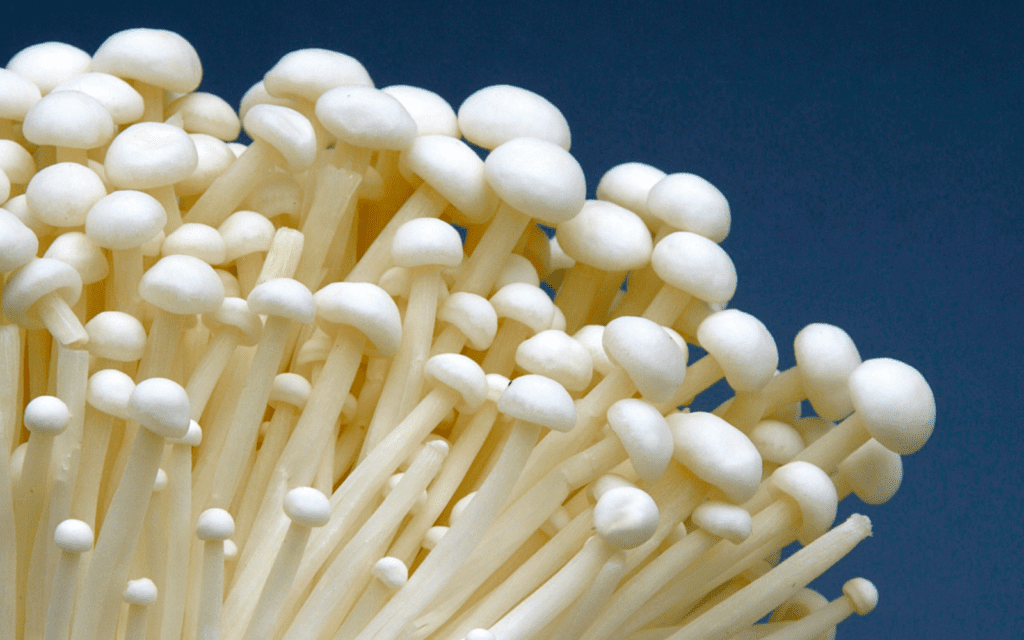Introduction:
Growing mushrooms at home might feel overwhelming, but following the guidelines below, you can quickly cultivate mushrooms at home. In India, mushroom cultivation is one of the highly profitable businesses.
It requires a relatively small investment and is a prominent place for cultivation. After proper training in mushroom farming, many women have become financially free by starting their businesses in mushroom cultivation.

According to statistics, Bihar is the no.1 state in mushroom production (2022-2023). This guide will answer all the crucial questions, like how to grow mushrooms at home, with a simple step-by-step procedure.
Health benefits of mushrooms:
A Mushroom is stated as a fungus fruiting body. Mostly it will grow above the soil and contains spores. Mushroom is one such quality food that has so many nutritional benefits. It contains 3.7%protein,2.4% carbohydrates, minerals 0.6%, fat 0.4% of, and water 91%on fresh weight.
Amino acids present in mushrooms are very much crucial for human growth activity. Even after cooking, some important vitamins C, D, A, and k are retained in mushrooms. All age category people can consume mushrooms without any restrictions.
The fruiting body is the edible part and is commonly consumed. The Mushroom doesn’t contain chlorophyll and a root system.
Mushroom, for their nutrition, completely relies on organic material. Some mushroom mostly grows on dead wood or living trees. It is called saprophytes. Some mushroom lives on animal and plant tissues. It is called parasites. In some cases, mushrooms have a symbiotic relationship with plants, and it is called mycorrhizae.
The market for mushrooms globally will be over 30k million in 2027. China is leading in mushroom cultivation china alone cultivates more than 20 different varieties commercially.
Types of mushrooms:
Mushrooms are of two types. Mainly one is edible, which can be consumed, and the other one is poisonous mushrooms not for consumption.

Popular edible mushrooms are four as follows:
- Button mushroom -Agaricus bisporus
- milky Mushroom– calocybe indica
- oyster mushroom – Pleurotus spp
- paddy straw mushroom– Volvariella spp

| S.NO | MUSHROOM NAME | APPEARANCE |
| 1. | White mushroom | Button shape |
| 2. | Cremini (Baby Bella) | Earthy colour |
| 3. | portabella | Large vegetarian meat substitute |
| 4. | morel | Sponge-like appearance |
| 5. | oyster | Mild delicate mushroom |
| 6. | shiitake | Incredible stem |
| 7. | Hen of the woods | Rich earthy and woodsy |
| 8. | enoki | Crunchy and mild |
| 9. | chanterelle | Apricot colour with peppery flavour |
| 10. | porcini | Intense mushroom flavour |
| 11. | truffles | Fragrant and flavourful |
TNAU Coimbatore released commercial varieties:
- Oyster mushroom:
Pleurotus sajorcaju(M2)
Pleurotus djamor(MDU 1)

2. Milky Mushroom:
Calocybe indica(APK 2)
Tricholoma giganteum(co3)

3. Button mushroom:
Agaricus bisporus (Ooty 1)(Ooty 2)

Other edible mushrooms:
Portobello mushroom, shiitake mushroom, Enoki mushroom,shimeji Mushroom, porcini mushroom.
Edible Mushroom:
In the olden days, the Mushroom is considered the “food of god.” Warriors consumed mushrooms because they contained lots of goodness in them.
Portobello mushroom:
This Mushroom is also called a white button mushroom. This Mushroom has numerous health benefits. It contains vitamin D, B6, and a lot of antioxidants, and it also contains lots of copper and selenium, which are needed for the body to form connective muscles. The origin of this Mushroom is Europe and North America.

Shiitake mushroom:
Shiitake mushroom is worldwide famous, and its native is japan. It has many health benefits and is used in herbal pharmacies because it is rich in fibre. It is also known as “black winter.” Shiitake mushrooms boost the immune system and control diabetes.

Enoki mushroom:
This Mushroom is also known as winter fungus. These types of mushrooms are widely used in east Asia. This Mushroom can be eaten as a salad, soup, and cooked as well. Enoki mushroom is Rich in minerals, vitamins, thiamine, calcium, and copper.
Shimeji Mushroom:
Buna shimeji is the other name of this Mushroom. shimeji Mushroom is mostly found in the eastern side of Asia. Shimeji mushroom is a great combination with noodles. It has a mild umami taste. It is a good source of protein, zinc, vitamin B, and copper. People who want to reduce weight and sugar levels can intake this Mushroom.

Porcini mushroom:
This Mushroom is the largest and grows up to a 12-inch diameter. These are nutty flavour mushrooms. Porcini mushroom has lots of health benefits. It is good for gut health, increases immunity contains lots of iron.

How do mushrooms grow?
Most mushrooms grow from spores and prefer dark, humid conditions. one of the easy ways to cultivate mushrooms at home is as follows:
STEP1: In simplest terms, spores are seeds of mushrooms that are very tiny and cannot be seen through our naked eye.
STEP 2: spores will not grow in soil as all veggies grow. They require some special growth medium for their growth. They prefer to grow in paddy straw, wood chips, sawdust, and coffee grounds.
STEP 3: As we grow the mushrooms at home, we can easily use paddy straw as a substrate. Spores+paddy straw =spawn
STEP 4: After this, spawn grows and produces a thread-like structure called mycelium. Finally, this thread-like structure grows into mushrooms. Instead of growing from spores, you can purchase spawn straight away, which makes the process much easier and faster.
How to grow mushrooms at home in a plastic bucket?
There are many ways to grow mushrooms at home. But growing them in a plastic bucket is one of the very famous techniques used by many peoples. Here I am going to explain how to start mushroom farming at home using a plastic bucket.

STEP 1
Selection of mushroom kit:
If you want to grow mushrooms by trial and error, this method of growing mushrooms will help you to see a demo before cultivating on a big scale.

- Select 2-5 gallons of the bucket and make holes(1-1.5cm) in the bucket so that mushrooms can grow and come outside with the help of the hole in the bucket.
- The selected bucket should be sterilized with the help of disinfectant or sterilizer to protect it from harmful microorganisms and kept ready.
STEP 2:
Choosing mushroom variety:
- If you are a beginner in mushroom cultivation, then prefer oyster mushroom as it is very beginner friendly and easy to grow.
- Within two weeks, this variety will be ready to harvest.
STEP 3:
Growing medium:
You can use dehydrated paddy straw pellets, which you can buy online or from nearby stores.
STEP 4:
Purchase spawn:
Instead of growing mushrooms from a spore, you can straight away purchase spawn from online or nearby stores, as this makes the work easier and faster.
STEP 5:
- Layering the paddy straw and spawn (mushroom seeds) inside the sterilized bucket and moisture the substrate by pouring water until it gets moisturized, not soggy. Cover the bucket with cardboard to prevent dehydration.
- Now place the bucket in a clean and humid place where there is not much sunlight.
- Frequent misting of water in holes is an essential step in maintaining moisture.
- Within 2-3 weeks, approximately 14-15 days, we can harvest the Mushroom.
- This is one of the easiest ways to grow mushrooms at home in low quantities.
How to cultivate mushrooms?
Cultivating Mushrooms at home may be easier than many people may think. Humans have been doing that for many centuries. Nowadays, we have developed many easy methods to cultivate mushrooms at home.
Mushrooms can be cultivated easily at home itself as it is mostly grown in indoor cultivation. Growing mushrooms at home require zero light, and after proper training, they can be grown by anyone.
For example, in India, free training is given by the agriculture department at KVK (Krishi Vigyan Kendra) to farmers about mushroom cultivation at home. Mother spawn is also provided free by the government for mushroom cultivation. Mother spawn is like a seed for mushroom cultivation.
Cultivating mushrooms at home requires cold and humid climates. The ideal temperature for the growth of a mushroom is 12-15c. The best Mushroom, which can be easily cultivated in the home itself, is an oyster mushroom. It also requires less space and doesn’t require a specific environment for growth, and is easily adaptable for all places when compared to other types of mushrooms.

The collection of required material is the only tricky part of mushroom farming.
These are the following things required for mushroom cultivation:
- Paddy straw/wheat straw
- spray bottle for spraying water
- water
- Big polybags
- thermometer ( to check the temperature)
- clean and sterilized equipment
- mushroom seeds(spawns)
- Thermocol
How can mushrooms be quickly grown at home?
When you are planning to grow mushrooms at home quickly, you may be wondering where I can grow mushrooms at home. What kind of environmental conditions, nutrients, and sunlight will you need? You have to optimize these conditions to grow them quickly.

Step 1- In the first step, paddy straw/ wheat straw should be boiled with 2-3 cups of water in a pan for 10- 15 minutes on high heat to sterilize the paddy straw. We can easily get the paddy straw in a nearby shop where gardening equipment and mushroom seeds are sold.
Mainly boiling is done to kill harmful pathogens and bacteria. While boiling, the cellulose of the paddy straw gets loosened, and it helps in the growth of mushrooms.
Step 3- After boiling, now allow it to cool down for 10-30 minutes. Squeeze the entire water from the paddy straw to remove the moisture entirely. Now transfer the entire paddy straw to a new paper sheet and keep it under the sun for one whole day.
Step 4– Now, take the polybags and spread this paddy straw inside the polybag layer by layer. After one layer, sprinkle the mushroom spawns( seeds)and again cover it with another layer of paddy straw. This same step is followed until the entire bag gets filled with 4-5 layers. The layer should be 2-3 inches. Now press it gently with the help of your hands. Close the opening now. No air pocket should be there.
Step 5- Now make some holes in the polybag, approximately 8-10. After completion, keep the polybags hanging in a dark and cool place for the next 10- 15 days. After 10-12 days, small pin size heads start emerging out white mushrooms are germinating. Now make big holes by using a needle or pen.
Spraying water is mandatory to avoid dryness in the heads of mushrooms. After 15-20 days, mushroom budding can be seen in the holes of the polybag. The first harvest begins from 3-4 days after the head emerges; likewise, in 5-7 days intervals, three harvests can be done. The total crop cycle of mushrooms is 40-45 days.
Where can Mushroom spawns(seeds) be purchased?
To buy free mushroom spawns reach out to a nearby Agricultural research station where you can get the mother to spawn for free of cost.
Online you can buy from India mart for Rs.150/kg.
Through Amazon and Flipkart also, you can make a purchase.
FAQ:
Can you grow mushrooms from a mushroom?
Yes, you can grow mushrooms from mushrooms by propagation technique. A single mushroom contains tiny microscopic 16-20 billion spores (mushroom seeds), which we cannot able to see through our naked eye. The old mushroom act as mother culture to produce new mushrooms.
Can I grow mushrooms at home?
Yes, for growing mushrooms at home, you should follow the given above guidelines. First, grow mushrooms in the small units after completing successful harvesting, then do it on a large scale with proper expert guidance. In agriculture research stations, scientists are conducting free training on how to grow mushrooms at home and to encourage young entrepreneurs to get success in mushroom cultivation.

